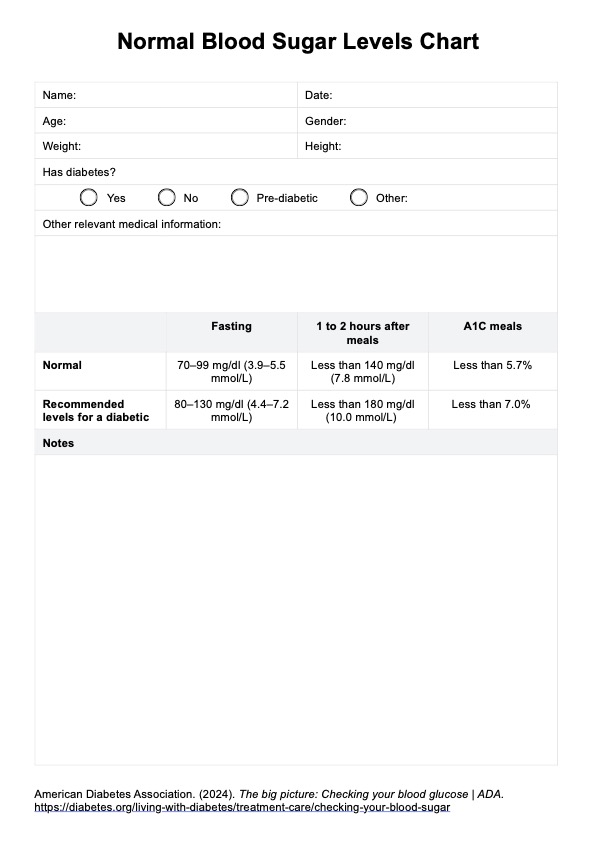This chart allows healthcare professionals to easily compare blood sugar readings against target ranges. This visual tool helps identify potential issues and allows for informed decisions about treatment plans. It can also empower patients to track their blood sugar levels and understand their progress.

Normal Blood Sugar Levels Chart
Understand how a Normal Blood Sugar Levels Chart works. Get access to a free PDF template and example in this guide.
Normal Blood Sugar Levels Chart Template
Commonly asked questions
While fasting blood sugar tests are common, non-fasting tests provide a snapshot of blood sugar levels at any time. This can be helpful in situations where a patient might not be able to fast beforehand, offering additional data points for a more comprehensive blood sugar picture.
Yes, the glucose target levels on the chart might be adjusted based on age, the presence of other health conditions, the higher risk of hypoglycemia, or other factors. It is crucial to consult with a healthcare provider for the most applicable targets.
EHR and practice management software
Get started for free
*No credit card required
Free
$0/usd
Unlimited clients
Telehealth
1GB of storage
Client portal text
Automated billing and online payments











